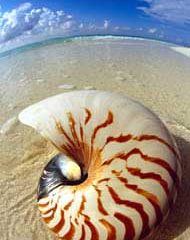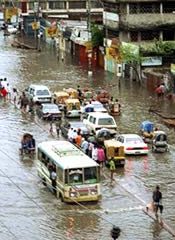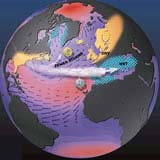
Water trapped for millions of years gives a glimpse of oceans’ turbulent past.
Drops of sea water entombed within salt crystals millions of years ago are giving researchers a glimpse of ancient oceans. The water, trapped during evaporation, reveals that the seas have seen large chemical changes during their history.
“The consensus had been that sea-water chemistry hadn’t changed that much over the past 600 million years,” says geochemist Juske Horita of Oak Ridge National La

With a weather monitoring network a new model could predict coastal floods in Bangladesh. A new model should help forecast the massive floods to which the northern coast of Bangladesh is prone 1 . In principle, the model can predict the heights and arrival times of the huge waves that cyclones cause, and so could improve the planning of sea defences. The effectiveness of the model will depend on the availability of accurate, timely and detailed meteorological data, ca

Ozone miniholes over the North Atlantic follow the unsteady pulse of climate fluctuations.
Recurring fluctuations in the North Atlantic climate are punching miniholes in the ozone layer, exposing Scandinavia and northern Europe to higher levels of ultraviolet radiation than normal, say two climatologists.
Seesawing air pressure over Greenland and the subtropical north Atlantic Ocean stirs the atmosphere and wafts ozone-depleted air towards populated high-latitude regions in

Mathematician Ian Stewart talks to Nature Science Update about snowflakes, sticklebacks and a new kind of science.
Ian Stewart was turned on to mathematics at the age of seven. A broken collarbone freed him from an uninspiring teacher allowing his mother to ignite his interest in numbers while he was laid up at home.
His writing career began with a series of how-to manuals for now-defunct early 1980s microcomputers. It has since broadened into popular science and science fi